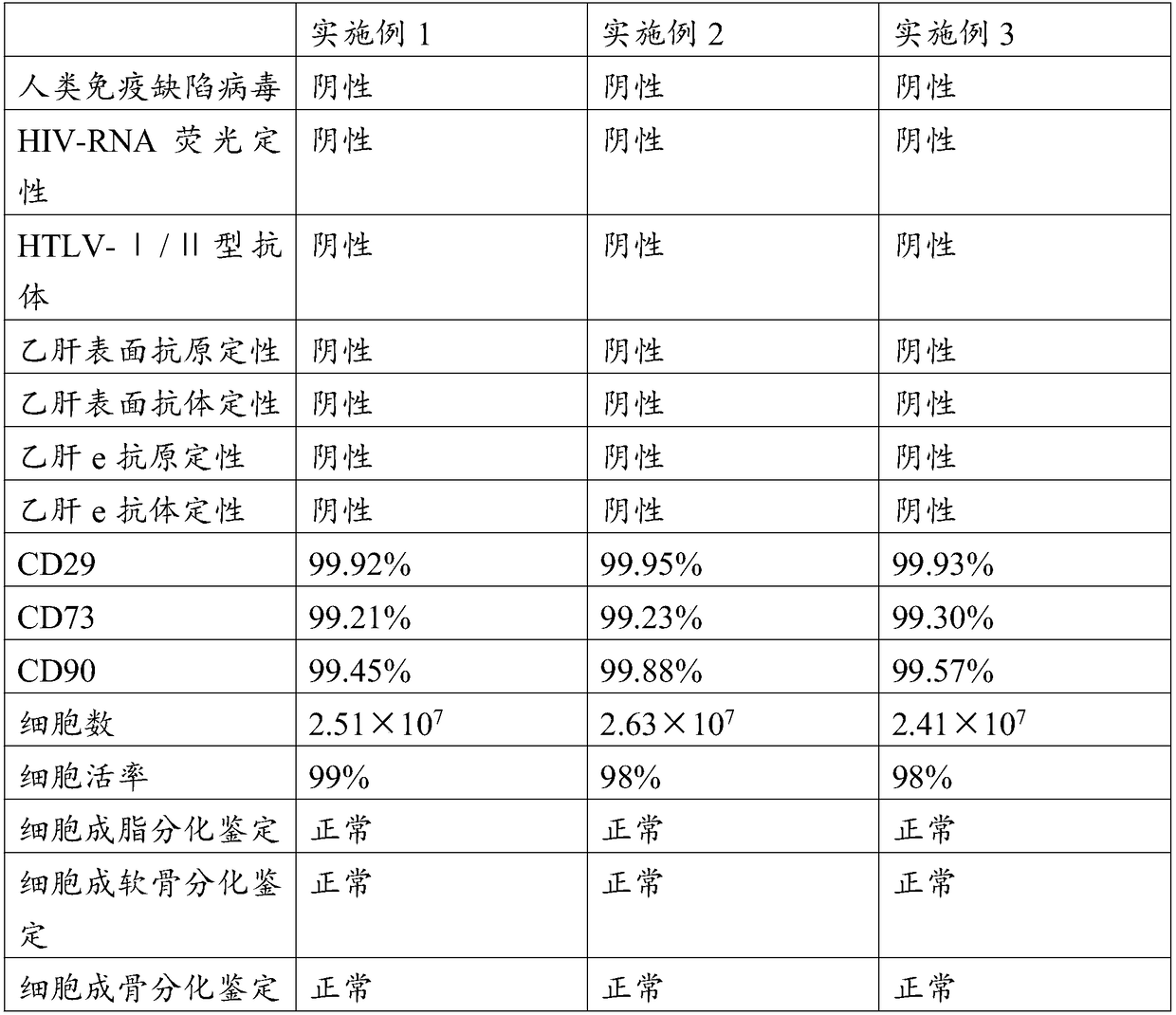Preparation method of deciduas mesenchymal stem cells
A technology of stem cells and cells, applied in the field of cell biology, can solve problems such as difficulty in realizing large-scale production, and achieve the effects of strong immune regulation, short time consumption and low cost.
- Summary
- Abstract
- Description
- Claims
- Application Information
AI Technical Summary
Problems solved by technology
Method used
Image
Examples
Embodiment 1
[0037] This embodiment provides a method for preparing decidual mesenchymal stem cells, which specifically includes the following steps:
[0038] Step 1: Separation: After washing the placental tissue with sterile saline, carefully separate the umbilical cord and placental decidua tissue, and separate the umbilical cord and decidua tissue;
[0039] Step 2: Initial treatment: Cut the umbilical cord and placental decidua tissues in step 1 into small tissue pieces, wash away the blood components in the two, and then add type II collagenase and trypsin to digest the small tissue pieces.
[0040] Step 3: Filtration: Filter the mixed liquid obtained after digestion through a 200-mesh filter to remove insoluble substances.
[0041] Step 4: Inoculation and cultivation: inoculate the filtered mixed liquid into cell culture flasks respectively, and cultivate them in an incubator at 37° C., 5% CO 2 , and saturated humidity with DF12 culture liquid containing fetal bovine serum.
[0042] S...
Embodiment 2
[0046] This embodiment provides a method for preparing decidual mesenchymal stem cells, which specifically includes the following steps:
[0047] Step 1: Separation: After washing the placental tissue with sterile saline, carefully separate the umbilical cord and placental decidua tissue, and separate the umbilical cord and decidua tissue;
[0048] Step 2: Initial treatment: Cut the umbilical cord and placental decidua tissues in step 1 into small tissue pieces, wash away the blood components in the two, and then add type I collagenase and trypsin to digest the small tissue pieces.
[0049] Step 3: Filtration: Filter the mixed liquid obtained after digestion through a 200-mesh filter to remove insoluble substances.
[0050] Step 4: Inoculation and cultivation: Inoculate the filtered mixed liquid into cell culture flasks respectively, and use DF12 culture medium containing fetal bovine serum at 37°C and 6% CO 2 cultured in a humidified incubator.
[0051] Step 5: Subculture: ...
Embodiment 3
[0055] This embodiment provides a method for preparing decidual mesenchymal stem cells, which specifically includes the following steps:
[0056] Step 1: Separation: After washing the placental tissue with sterile saline, carefully separate the umbilical cord and placental decidua tissue, and separate the umbilical cord and decidua tissue;
[0057] Step 2: Initial treatment: Cut the umbilical cord and placental decidua tissues in step 1 into small tissue pieces, wash away the blood components in the two, and then add type II collagenase and trypsin to digest the small tissue pieces.
[0058] Step 3: Filtration: Filter the mixed liquid obtained after digestion through a 200-mesh filter to remove insoluble substances.
[0059] Step 4: inoculation and cultivation: Inoculate the filtered mixed liquid into cell culture flasks respectively, and cultivate them in an incubator at 37° C., 4% CO 2 , and saturated humidity with DF12 culture liquid containing fetal bovine serum.
[0060]...
PUM
 Login to View More
Login to View More Abstract
Description
Claims
Application Information
 Login to View More
Login to View More - R&D
- Intellectual Property
- Life Sciences
- Materials
- Tech Scout
- Unparalleled Data Quality
- Higher Quality Content
- 60% Fewer Hallucinations
Browse by: Latest US Patents, China's latest patents, Technical Efficacy Thesaurus, Application Domain, Technology Topic, Popular Technical Reports.
© 2025 PatSnap. All rights reserved.Legal|Privacy policy|Modern Slavery Act Transparency Statement|Sitemap|About US| Contact US: help@patsnap.com



